The marine environment is a hostile one. Fouling and corrosion are constant threats, and while naval engineers have gotten very good at dealing with them, some of the techniques require that they can work on the exposed hull free of water. Initially, this was done by simply running the ship up on the beach and waiting for the tide to go out. Later, as the galley developed in the Mediterranean, facilities were built to help with this process, most notably specialized ship sheds where galleys could be hauled out on ramps and allowed to dry out under cover when not in use.
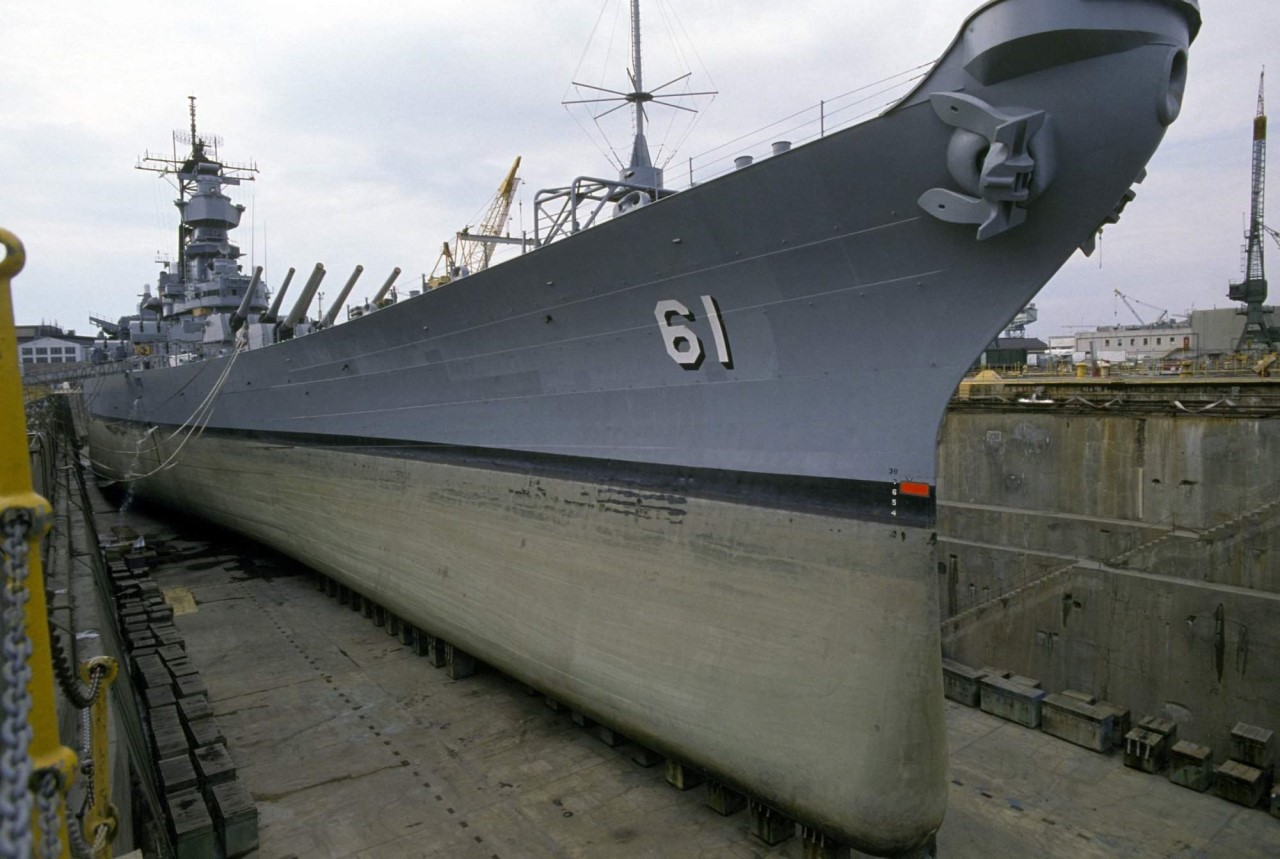
Iowa in drydock, 1984
But this only worked so long as ships were small enough to stand the stresses of being beached, and during the Hellenistic era, galleys began to grow, and the Greeks developed the first drydocks. The basic concept was simple enough: a big pit was dug next to the sea, with a door of some sort that could seal it off after a ship had been brought in. The water would then be pumped out, allowing it to be worked on in the dry. Information on ancient drydocks is fragmentary, as they were large and expensive, and like so much of the infrastructure of naval warfare in the Mediterranean appear to have died out after the Roman Empire unified the entire area.
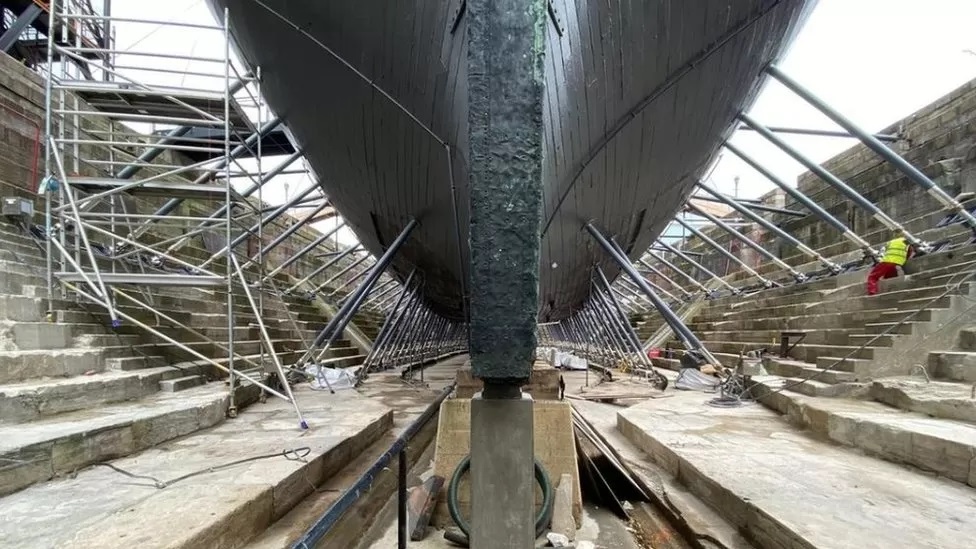
HMS Victory in the No. 2 drydock at Portsmouth, the oldest operational drydock in the world.1
The idea resurfaced a millennium and a half later,2 when Henry VII of England ordered construction of what was known as the "Great Dock" at Portsmouth. This was the first modern drydock, although some details had yet to be worked out. The most notable was the entrance, which was closed by a pair of gates and sealed with a layer of clay. Digging it out for the first undocking took 20 men 24 days. This dock was the start of the Portsmouth dockyard, which remains a cornerstone of the Royal Navy 500 years later. But drydocks remained expensive and valuable, so much maintenance was carried out in other ways, most notably with a procedure known as careening, where even quite large ships would be brought in and beached broadside, then heeled over to allow access to much of the lower hull. Coppering meant that this rather dangerous procedure was less necessary, and the practice died out.
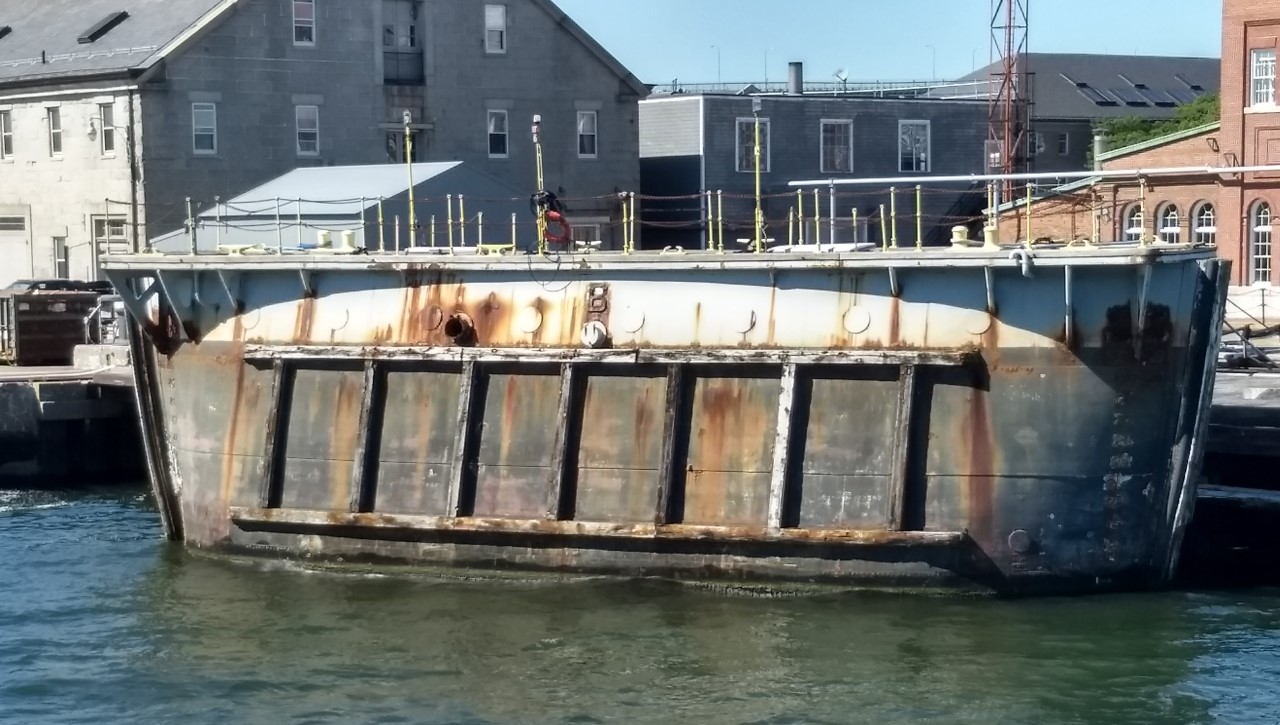
A caisson at Boston Navy Yard
Initially, the drydocks relied largely on the tide to fill and empty them, and the British positioned their facilities on the south coast of England, where the tidal range was sufficient to greatly reduce the need for pumps, even if it did mean that large ships could only be docked at the twice-monthly spring tides. This was critical enough that even Lord Barham, a devout Evangelical otherwise opposed to working on Sunday, admitted that it was acceptable to do so in the service of getting a ship in or out of dock. Starting in the 17th century, docks began to be built out of stone or masonry, and were usually sculpted to the approximate shape of the ship, with the sides in a set of steps to make it easier to support and work on the hull. Gate technology also improved, removing the need to use clay as a water barrier, although they remained somewhat dodgy until the introduction of the caisson, which replaced multi-piece gates with a single floating gate that was simpler and less leaky. A caisson is essentially a watertight box shaped to close the entrance to a drydock. When a ship is brought into the dock, it is emptied and moved out of the way, then moved back when the dock is closed and flooded down to seal the mouth of the dock.
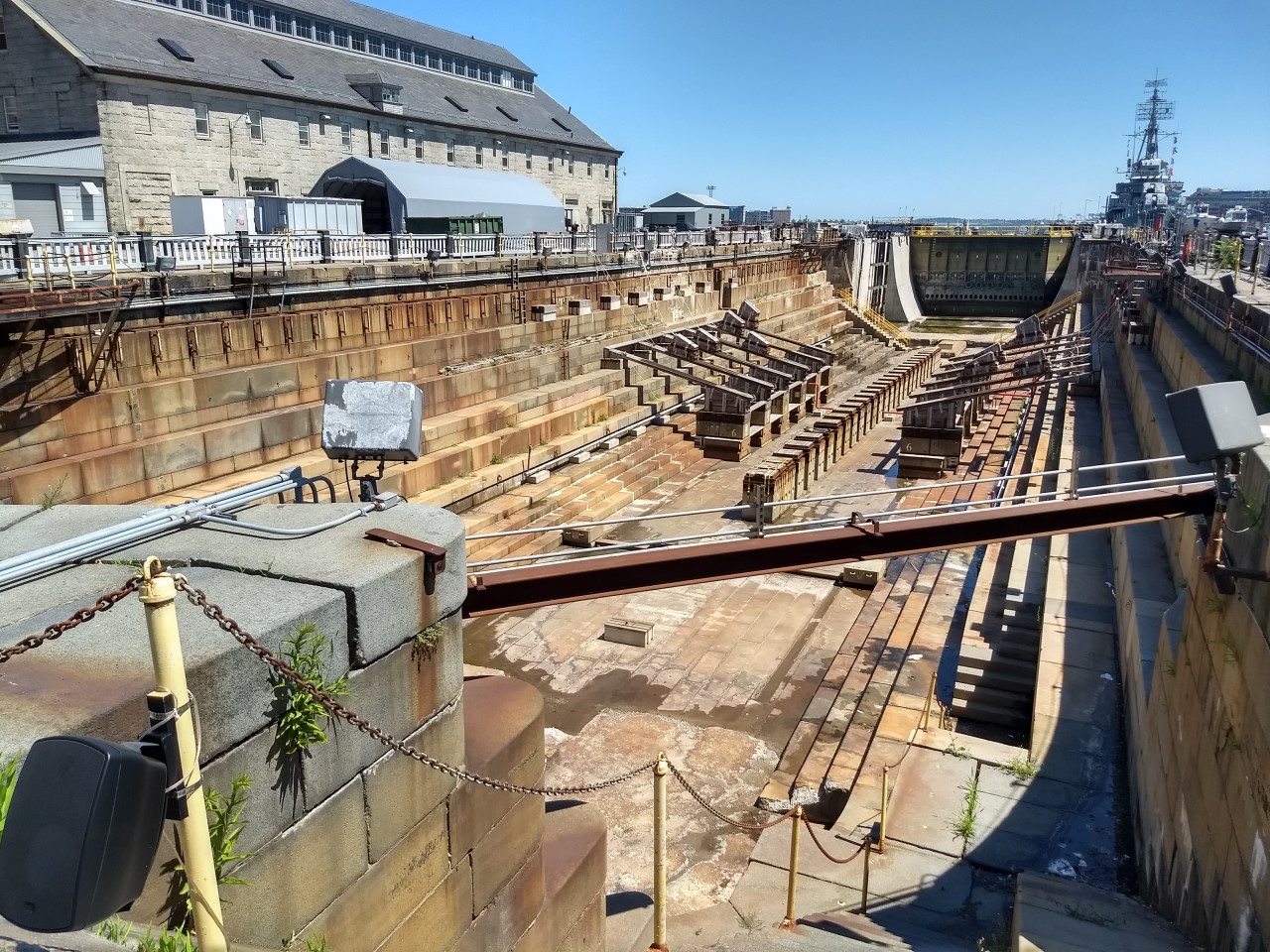
The old drydock at Boston
By the dawn of the 19th century, the drydock was a standard tool of naval power, and the US, recently independent, decided to get in on the action, although its first effort in the field of ship maintenance was not a drydock but a marine railway built in 1822 at the Washington Navy Yard. Instead of draining water from around a ship, the marine railway places a cradle under the ship and hauls it up an inclined track for work on the hull. A few years later, Congress authorized drydock construction, with drydocks in Norfolk and Boston being completed in 1836. Both still exist, with the Norfolk dockyard remaining part of Norfolk Navy Yard, and the Boston dock accessible to the public as part of Charleston Navy Yard, home to Constitution and Cassin Young. The Norfolk dock was enabled by a new technology, the steam engine, which allowed the dock to easily be pumped out despite the small tides. Both docks were 40' deep, 340' long and 100' wide, enough to take even a contemporary ship of the line. The original wooden caisson at Boston lasted until 1901, when it was replaced by the first steel structure built by the yard. A replacement for that one was built in 2015, before the dock was used for maintenance on Constitution.
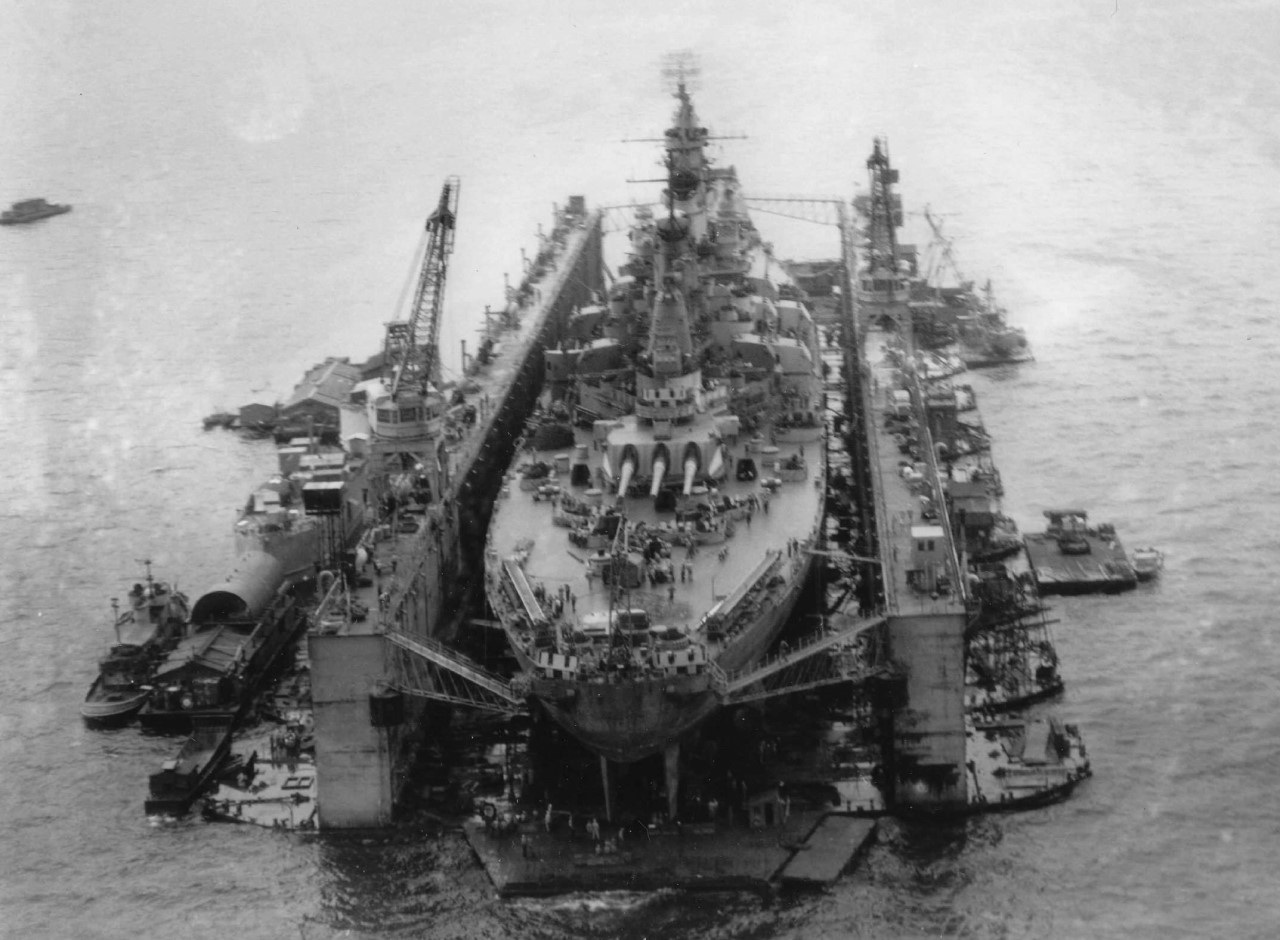
Iowa in floating drydock ASBD-2
The mid-19th century saw an alternative developed to the traditional fixed (graving) dock. The floating dry dock took the basic innovation pioneered by the marine railway, that a ship could be lifted out of the water instead of having the water drained from it, but in a form that was practical for much larger ships. A floating drydock is essentially a giant raft with walls. The bottom contained tanks which could be flooded to submerge the floor, with the walls providing some reserve buoyancy. The ship to be docked then is brought in and positioned, and the tanks pumped out, raising both ship and dock together. This was clearly a creature of the age of machinery, as it could make no use of the tide, but it was often cheaper, particularly in areas with poor geology or little local infrastructure. Most floating drydocks are sectional, allowing them to dock ships of various sizes, and even for one section to dock another. During WWII, the US built a number of these, many of which were towed to forward bases across the Pacific.
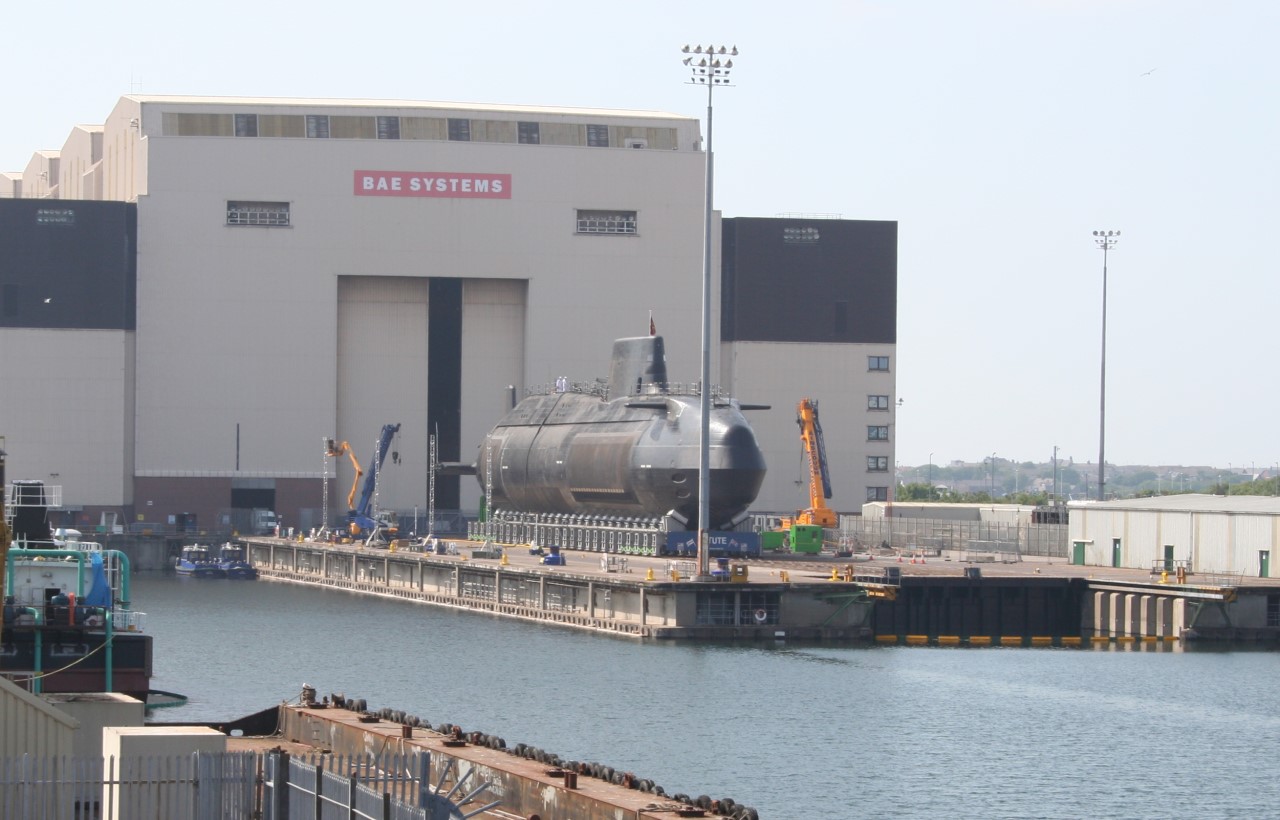
Astute being moved to the shiplift for launch
The graving dock and the floating drydock remain the mainstays of access to the outer hull today, although there have been some improvements over the last century and a half. The conventional independent (ship) caisson has been joined by the sliding caisson, which is set up to slide sideways into a recess in the wall of the drydock. This is useful in docks which see frequent turnover of their ships, as the caisson can be moved using shore-based winches instead of needing a tug. Also more common are docks which use more conventional doors, either two-piece interlocking doors, resembling those used on canal locks, or one-piece doors that lay flat against the bottom of the dock as the ship passes over. In the last few decades, drydocks have begun to be supplemented by shiplifts, systems that raise and lower ships using what is essentially a giant elevator. A shiplift is usually paired with a transporter system that can move the ship horizontally, although systems for large ships are usually only found at shipyards, where they are safer than slipways and cheaper than building ships directly in drydocks.
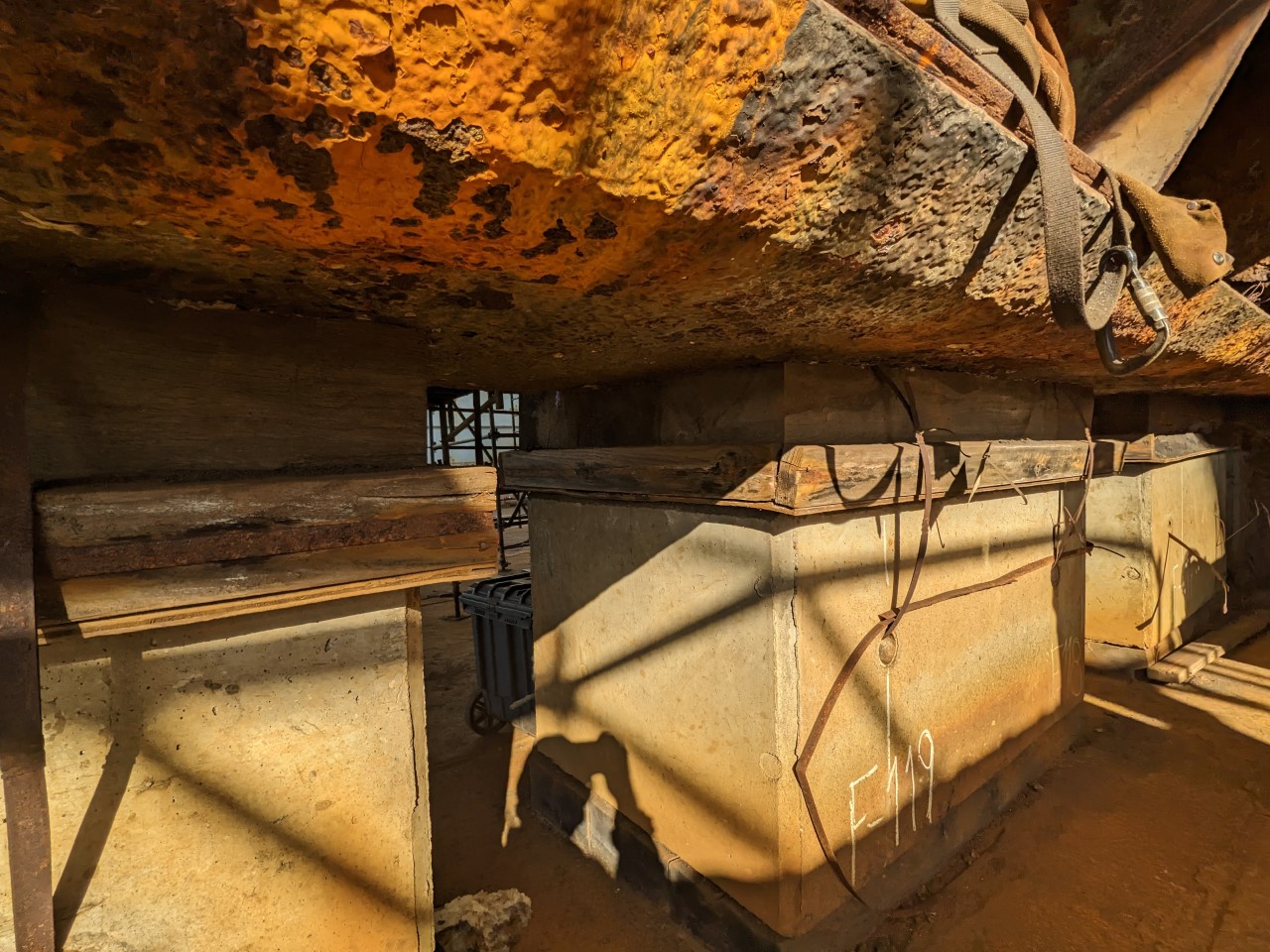
Keel blocks hold up Texas during her 2022-2023 drydocking
Regardless of whether the drydock is fixed or floating, the procedure for using it is the same. It begins with checking that the ship will actually fit into the dock, after which the dock staff start setting up the docking blocks. While it would theoretically be possible to just leave the ship flat on the bottom of the dock, this would be structurally dubious and make access to the underside of the ship impossible. Instead, blocks are laid out in a plan prepared by the designers. These usually have a concrete base, over which sits either wooden wedges or a box full of sand with wood sides, topped by a wooden cap shaped to fit the hull. The box or wedges allow the block to be disassembled while the ship is on it in case access is needed to that part of the hull, while wood is used where the blocks make contact with the ship to make sure that the hull itself isn't damaged by any minor imperfections. Some ships are further supported by shores, long timbers usually cut from the center of the tree, which stabilize it against the sides of the dock. This is rarer on modern ships, which have either dedicated docking keels or large areas of flat bottom to keep the ship upright.
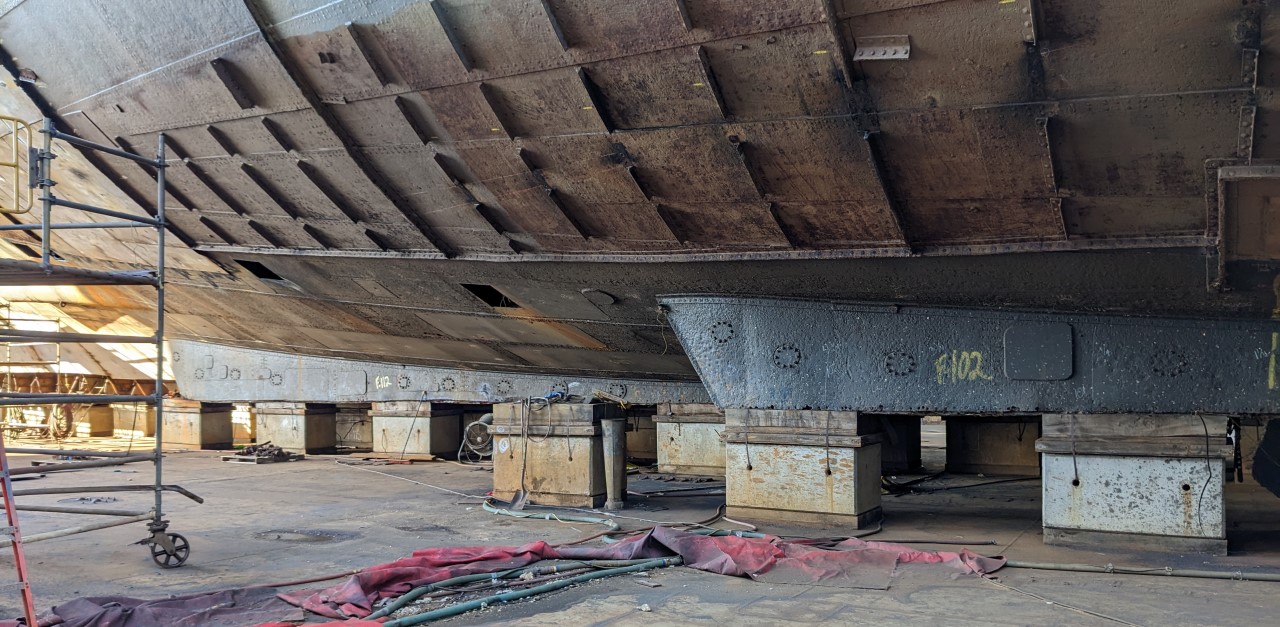
Docking keels on Texas. Note that these keels are stuffed with teak, which is exposed on the bottom. It's in remarkably good shape for 110-year-old wood.
As the ship is brought in, it is positioned very carefully over the blocks. Lines to the side and fixed markers built into the dock give information for winches on the dock to position the ship. As the ship is lowered, a diver might be sent down to ensure that the ship is settling cleanly onto the docks. If it is, then care is taken to make sure the ship settles evenly, and that shores are put in place promptly, if needed. Stability is a major concern during docking, as the ship is supported entirely from the bottom. This can be a problem even today, as evidenced by the recent incident where RV Petrel fell off her blocks in a Scottish drydock. But once the ship is on the blocks and the dock is dry, work can begin.
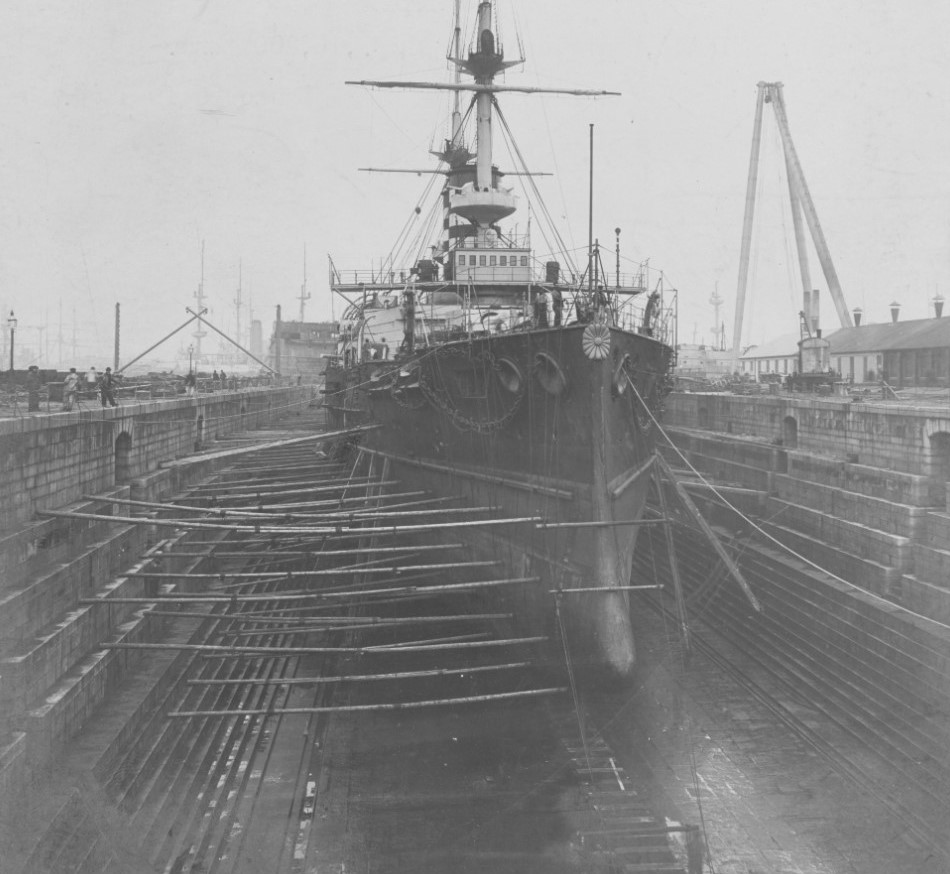
Mikasa in drydock, with lots of shores
Various considerations attend this work. Some navies prohibit the carriage of ammunition into drydock, while others simply insist that the magazine flooding mechanism be connected to the shoreside firefighting system. The blocks insulate the ship from ground, so lightning straps also have to be fitted. Undocking is pretty straightforward compared to docking. The bottom is checked to make sure that everything is watertight, and the shores fore and aft are removed to avoid the risk of damage to the hull if the bow or stern floats first. Then the dock is flooded, and the caisson, if any, removed, and the ship floated out. That said, problems can arise if significant weight has been added or removed and the ship trims differently than she did when she entered dock. As a result, it is standard practice to keep track of alterations and ballast as necessary to ensure a safe float-out.
1 Yes, one could quibble with "operational" given that they haven't flooded the dock in a century. Victory needed a lot of work, OK? Photo courtesy of BAE via the BBC. ⇑
2 The wiki article mentions some stuff in China in the 10th century. I am discounting it not out of Eurocentricism but because it appears they did it once by digging a big pit, opening the wall, towing the ships in and then rebuilding the wall. ⇑

Comments
A quibble: a cassion is a movable watertight box used to dry a section of a waterway, period; shaping it to close the entrance to a drydock is a clever specialization but not part of the definition. The more common use for them is to help with construction or maintenance of bridges, by providing a dry spot of riverbed to construct the bridge footings.
The word cassion comes from the French for "box", and it is used to refer to both the lock gate system and the system used for building bridges and the like. There's very little similarity in design and use between the one used in civil engineering and the one I talk about here. They even have separate wiki articles.
A couple of neat images:
“Floating Out Day” for the HMS Nelson, “ship caisson” to the right:
https://hms-surprise.tumblr.com/post/94725713804/woolwich-dockyard-4th-july-1814-floating-out-day
And the USS Constitution, ship caisson in the foreground:
https://westlongitude.tumblr.com/post/89698986580/jcsmarinenews-uss-constitution-and-in-the
Great topic Bean! Thank you very much for covering this.
Did anyone except the UK build dry docks in the colonies? Just saw they built one in Singapore in '38, and had floating docks in Malta and Bermuda. Probably didn't get much use out of the one in Singapore...
@EdH
I think the cassion in the front of the photo of Constitution is the same one in my photo.
@Bernd
The only thing that springs to mind is the US taking a floating drydock to the Philippines. But I'm not very familiar with the colonial French navy.
For the record, is it called a "cassion" or a "caisson"?
It's caisson (frech, as Bean said)
(And they do keep rolling along : ) )
Remember also the floating drydock PD-50, which sank while holding Admiral Kuznetsov...
The problem is that I use so many words that are not in the spellcheck, I'm sort of used to ignoring the red squiggly if it's a word that might not be in there. Turns out that "caisson" falls into the gray area. Should be fixed now.
It must have been exciting to get the ship positioned over the blocks in the old days when you were using the tides and the water was going down in a couple of hours, ready or not.
Not necessarily. Once the gate is in place, it will generally hold water in as well as out. Maybe not perfectly, but you'll have a while after the tide starts to go out.
I rather imagine the tolerances for the keel blocks aren't measured by micrometer, but by yardstick, and that the shores allow for correction of slight misplacement.
Look at the picture of Mikasa there - the shoring is asymmetrical.
That's actually because, if you look closely, Mikasa is off-center in the drydock. I don't know why that is, but it was an easy photo to find (stolen from SYWTBABB Construction Pt 3) that showed shoring clearly.
I couldn't decide if the apparent off-centering and/or misalignment to the centerline of the dock, was real or an artifact of the camera angle; so I gave it a miss
Replying to Ian Argent: For non-floating drydocks, placement on centerline is not critical, and may even be unachievable. Depending on the vessel and work to be accomplished, the services to the ship may be closer on one side than the other, or there may even be ship's configuration to be aware of, particularly with things like sponsons on carriers.